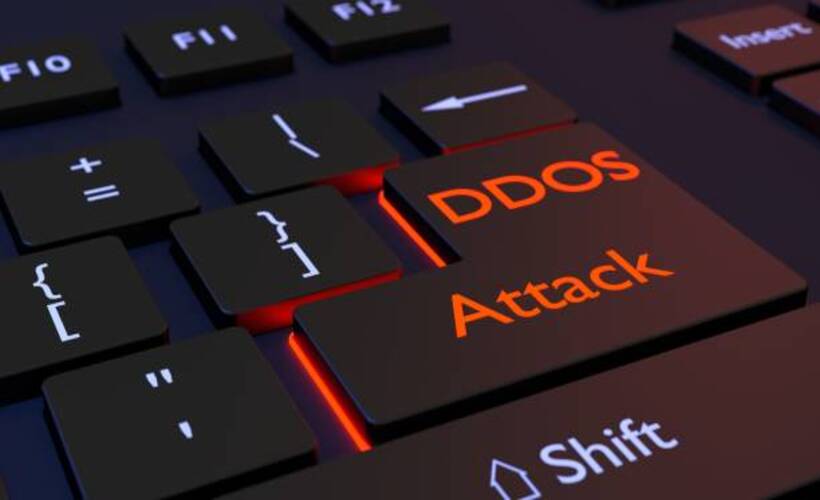DDoS Attacks: The Rising Storm in Cyber Security in 2025
Distributed Denial of Service (DDoS) attacks have surged in both scale and sophistication, leaving organizations and Cyber Security teams scrambling to keep up. These attacks, which flood networks, servers, or applications with overwhelming traffic, can cripple operations and cause millions in financial losses. Despite advancements in defence technologies, the escalating frequency and intensity of DDoS assaults reveal a harsh reality: our Cyber Forces are struggling to keep pace.
DDoS attacks are not a new phenomenon, but their nature has evolved. Traditionally, these attacks were relatively simple, leveraging compromised devices to send large volumes of traffic to a single target. Today, attackers employ advanced techniques, including:
- Application-layer Attacks: These specifically target applications to exhaust server resources rather than bandwidth.
- Botnet Armies: Networks of compromised IoT devices, such as smart cameras and routers, are weaponized to launch massive attacks.
- Multi-Vector Attacks: Combining different attack methods to target multiple layers of a system simultaneously.
In recent years, DDoS-for-hire services, also known as booter services, have democratized the ability to launch attacks, allowing even non-technical individuals to disrupt services.
The Numbers Behind the Surge
- Frequency: The number of DDoS attacks has skyrocketed, with some reports indicating double-digit growth year over year.
- Scale: Attacks exceeding 1 Tbps (terabits per second) are no longer rare, pushing the boundaries of existing defences.
- Duration: While some attacks last mere minutes, others persist for days or even weeks, increasing the toll on Cyber Security teams.
Why Are DDoS Attacks Overwhelming Cyber Forces?
- Volume of Traffic
- Attacks generate traffic levels far exceeding the capacity of most organizations. Even well-prepared enterprises struggle with the scale of modern attacks.
- Resource Strain
- Cyber Security teams must respond quickly to mitigate attacks while continuing to protect against other threats. This dual focus often leads to burnout.
- Advanced Techniques
- Attackers constantly innovate, using encrypted traffic, reflection/amplification methods, and zero-day vulnerabilities to evade detection.
- Cost Imbalance
- Defending against DDoS attacks is expensive, requiring investments in infrastructure, mitigation tools, and skilled personnel. In contrast, launching an attack can cost as little as a few dollars.
Real-World Consequences
- Business Disruption
- Prolonged downtime can result in revenue losses, reputational damage, and loss of customer trust.
- Critical Infrastructure
- Hospitals, financial institutions, and government agencies have been targeted, risking public safety and national security.
- Diversionary Tactics
- DDoS attacks are often used to distract from other malicious activities, such as data breaches or ransomware deployment.
How Can We Fight Back?
- Proactive defence
- Use tools like Web Application Firewalls (WAFs), Intrusion Prevention Systems (IPS), and Content Delivery Networks (CDNs) to absorb and mitigate traffic.
- Scalable Infrastructure
- Cloud-based DDoS protection services offer scalable solutions that can handle high traffic volumes.
- Threat Intelligence
- Real-time data about ongoing DDoS campaigns can help organizations prepare and adapt defences accordingly.
- Collaboration
- Governments, private companies, and internet service providers (ISPs) must work together to share information and combat large-scale attacks.
- Awareness and Training
- Educate employees about the signs of an attack and prepare incident response teams to act quickly.
The Role of Automation and AI
Given the speed and complexity of modern DDoS attacks, automation and artificial intelligence (AI) are critical. AI-driven tools can:
- Detect and respond to unusual traffic patterns in real-time.
- Analyse attack vectors to optimize defences.
- Reduce manual workload for overburdened Cyber Security teams.
A Call to Action
DDoS attacks represent a clear and present danger to organizations of all sizes. As attackers grow bolder, it's vital for businesses, governments, and Cyber Security professionals to bolster their defences. This fight requires investment in advanced technologies, collaboration across sectors, and a commitment to staying ahead of adversaries.
Our Cyber Forces are strong, but they need support. Without it, the rising tide of DDoS attacks could overwhelm even the most prepared among us.
Conclusion
In 2025, DDoS attacks remain a significant and growing threat in the Cyber Security landscape. As attackers leverage advanced techniques and larger botnets, the potential damage to businesses and infrastructure is unprecedented. Mitigating these attacks requires a proactive approach, including robust security solutions, real-time monitoring, and collaboration with specialized Cyber Security providers. Organizations must stay vigilant, continuously update their defenses, and educate their teams to effectively combat the rising storm of DDoS attacks and ensure the resilience of their digital operations.
